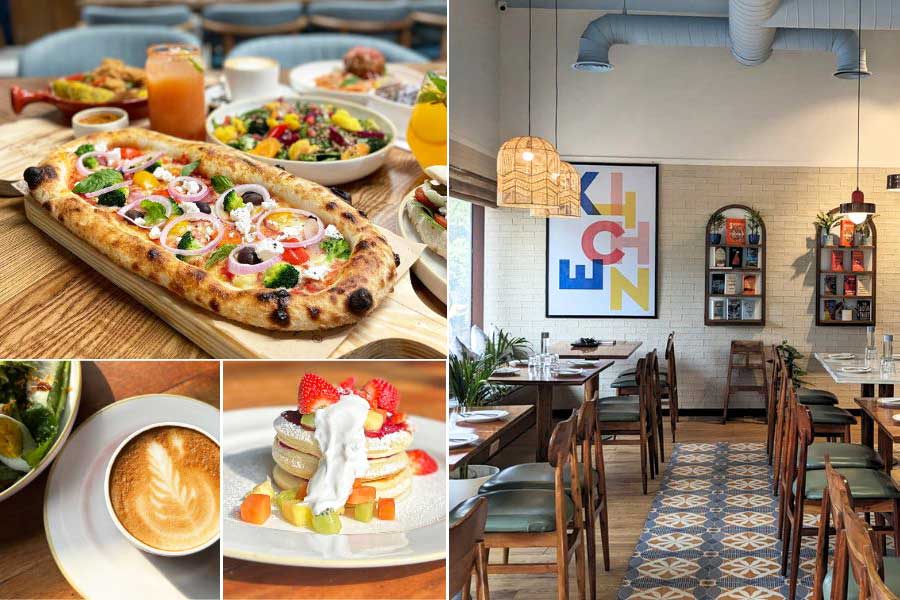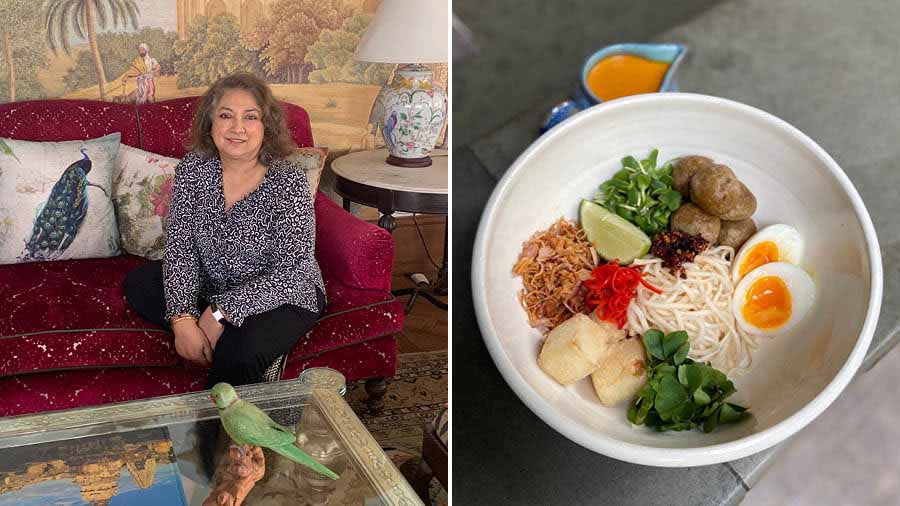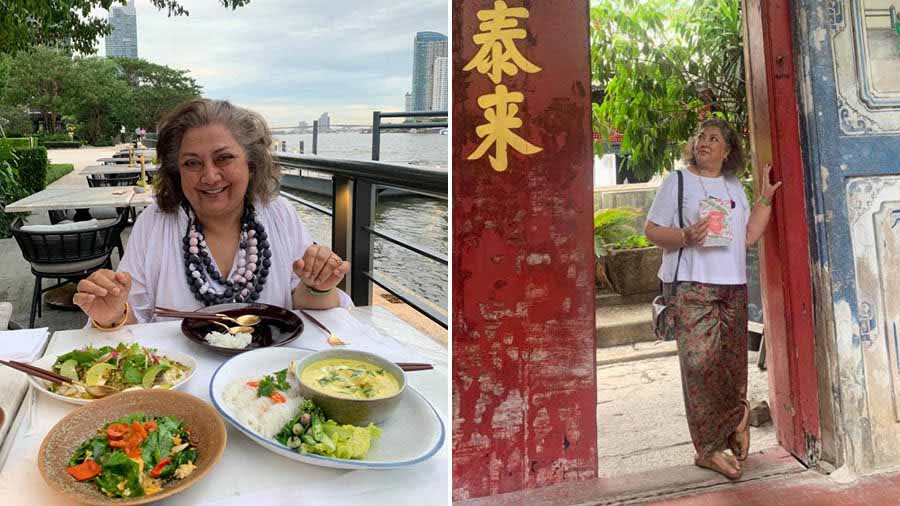Forget just millets, the new trend for 2024-25 has to be fine-dining vegetarian. Our chefs are going absolutely berserk with creativity. It started off with, I guess, The Bombay Canteen and other award-winning restaurants, then went on to Indian Accent, where chef Manish Mehrotra has done wonders with the vegetarian tasting menu and quite frankly, it’s the menu that I order more often than the non-veg one. A dear friend and ex-GM of Ananda in the Himalayas, Nikhil Kapur, said to me recently in fact, “I’ve turned vegetarian, because I just find the proteins in India a bit boring. It’s lamb or chicken, neither of which excites me and I don’t eat fish. So, I would much rather have interesting vegetarian options than go for those.” And I agree with him.

The Avartana restaurants are beautiful. It has fabulous lighting – the point is to clearly see your food ITC Hotels
I was introduced to Avartana, the modern south Indian fine-dining restaurant at the ITC Grand Chola in Chennai when I stayed there last year and it blew my mind. I was excited with literally every bite. The dishes were skillful, well thought out and perfectly executed. Young chef Diptii, who heads the team at Avartana at ITC Maratha in Mumbai, tells me it’s a group of young chefs who have been working for three years on the menus and dishes. The dishes are clever, clever, clever and tasty, tasty, tasty! I couldn’t fault them on anything.
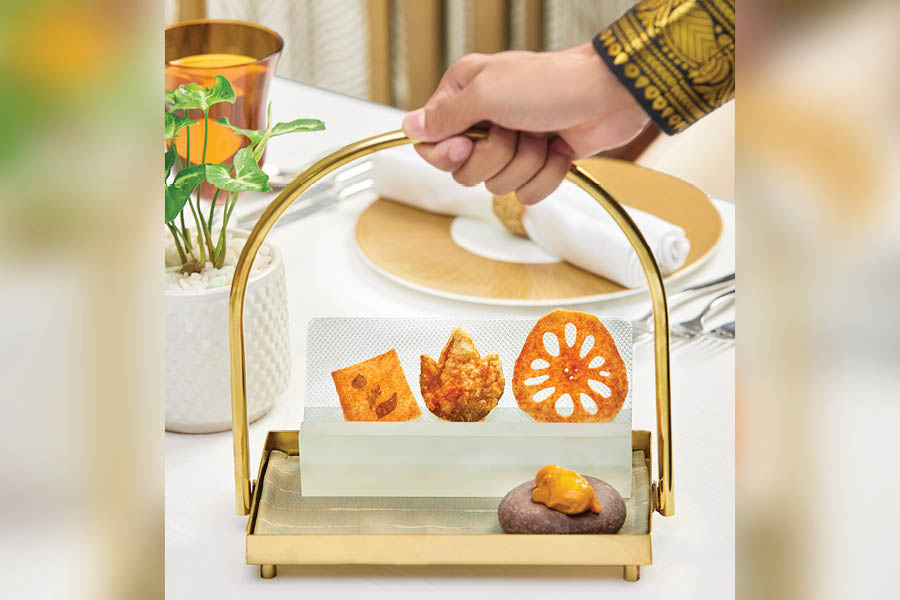
The dishes are clever, clever, clever and tasty, tasty, tasty! ITC Hotels
The restaurant is beautiful. It has fabulous lighting on the sides (the Chennai one) which makes the space look like something out of a Las Vegas movie set. I think the point was to clearly see your food. The cherry on the cake for me, time and time again, is the amazing tomato rasam – basically a tomato water, flavoured with cumin and Tellicherry pepper that they keep clarifying or ‘distilling’ as they put it – over two or three days and then brought to life with fresh coriander and served in a French press, much like coffee. I just kept having glass after glass.
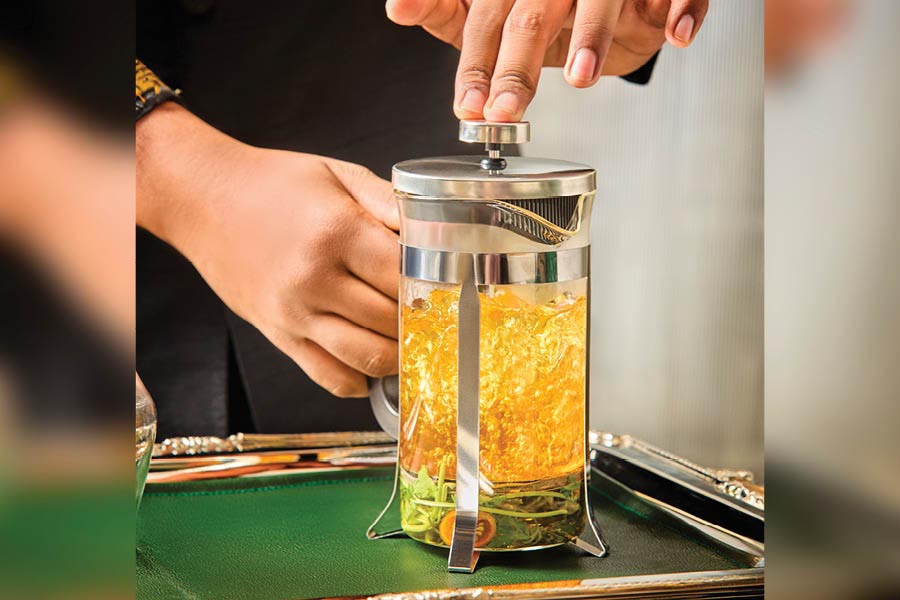
Distilled rasam ITC Hotels
There are several menus at Avartana, all very well-priced I must say, which range from 7-course to a 9-course to 11 and a 13-course. There are both non-veg and veg options of each with some common dishes, but it was really the vegetarian tasting menus that impressed me. We chose the 9-course menu when we were in Chennai at the ITC Grand Chola and the 9-course again at the ITC Grand Maratha, where the restaurant has just opened. This is the third Avartana for ITC in India. Kolkata is the second.

The fusion paan, a pop pick from the tasting menu at Avartana in ITC Royal Bengal, Kolkata — the second Avartana in India — which opened in November 2022
We booked a table for 7.30pm and it was already quite full. A great sign. It’s also a sign that things are moving. Twenty years ago, it might have been Dum Pukht or Bukhara or Peshawri that made it for the ITC with queues outside. Today, clearly, it’s Avartana, a sign that Indian fine dining is back in the game. A sign that people want to eat lighter, healthier, beautiful, skilled dishes.
So, what did we eat and what impressed me most? We started our Bela 9 courses with a tomato and millet rice crisp, which is the nicest way I’ve seen millets presented in a long time. The Cauliflower Crunch is very special – cauliflower is dehydrated (which makes the sweet taste of cauliflower really stand out) and then fried. It looks almost like a sculpture on the plate. It is served with a homemade coconut yoghurt, pomegranate and mint.
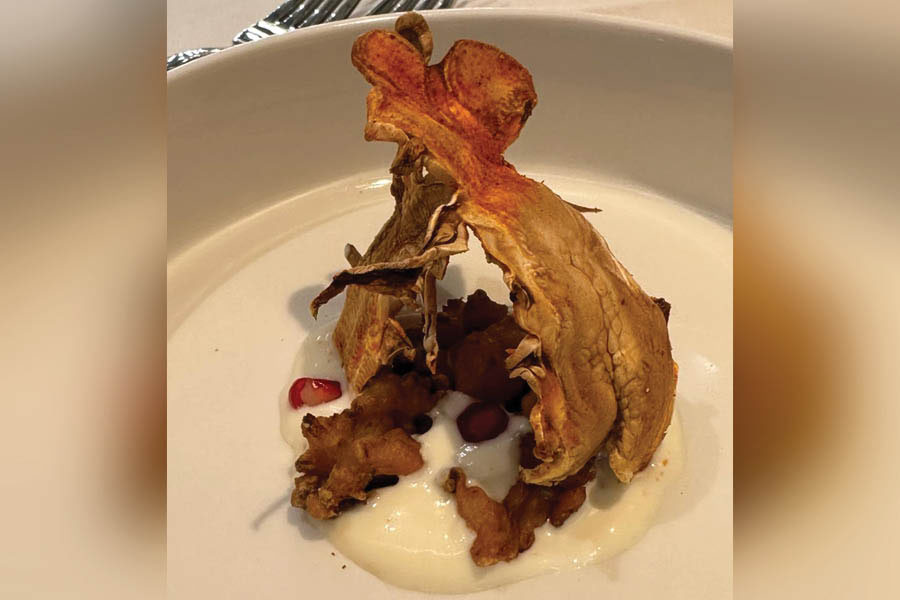
Cauliflower Crunch Karen Anand
The second star of the evening was the Spiced Aubergine: a charred eggplant sheet is wrapped around spiced eggplant flavoured with turmeric, tamarind and jaggery along with sago served with a creamy Byadagi chilli emulsion and yoghurt tempered with confit garlic. The smoky flavours come from charred aubergine, spice comes from Byadagi chilli emulsion and the freshness and tartness comes from the yoghurt. Pretty amazing.
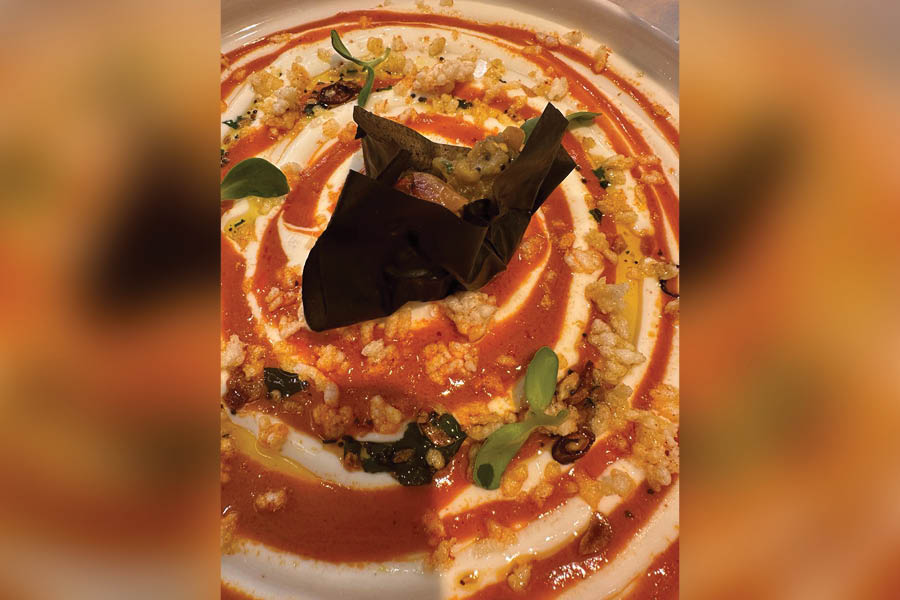
Spiced Aubergine Karen Anand
The third star for me was the Fennel Panna cotta with a sticky mango centre served with angel hair caramel. The panna cotta is set in an egg-shaped mould with the ginger flavoured sticky mango sauce filled in the centre to resemble an egg. Served with angel hair to look like a nest, the white chocolate egg shell is broken in front of you at the table to reveal the yolk. I love a bit of drama.
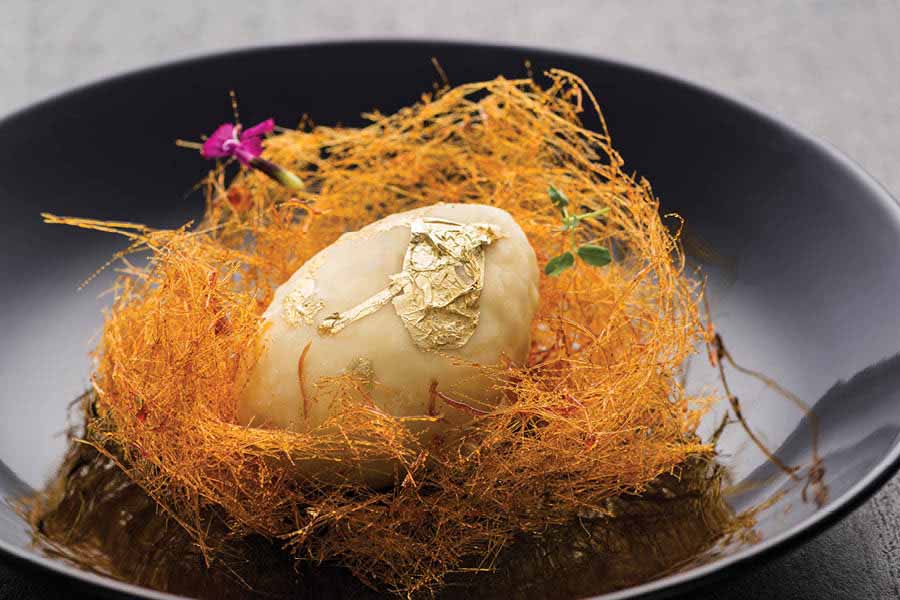
Fennel Panna Cotta with angel hair caramel ITC Hotels
Shining brightly at No. 6 as the sole flag bearer from India in TripAdvisor’s Best of Best 2023 Traveller’s Choice Awards and a frontrunner at Asia’s 50 Best Restaurants, Avartana for me, is one of the best restaurants in Mumbai today and I congratulate ITC for coming up with yet another winner in the Indian cuisine brigade. Pronounced ‘Avartan’, this Sanskrit word refers to rhythm, mysticism and magic.
To decipher your way through some of the techniques on their menu, here’s a glimpse into their skill set.
- Fermented black garlic: They use the technique of hot fermentation where garlic is fermented at 57 degrees for 45 days to attain black colour with sweet and sour notes. They use a particular variety of mountain garlic known as Kodai garlic from the Kodaikanal mountain region in Tamil Nadu.
- Beetroot and butter toffee: Beetroot juice is bloomed with a plant carrageenan called methylcellulose. Then spread very thinly and dried to attain texture like a thin plastic film which is then wrapped with Uthukuli butter, shaped into a toffee. Uthukuli is a place in the Chettinad region of Tamil Nadu where this famous white butter comes from.
- Dehydrated Cauliflower: Cauliflower is sliced and dehydrated. In this dehydration process, the flavour of cauliflower gets intensified leaving all its water content and keeping its natural flavour intact. It is then fried at a high temperature to give an aerated, light and crispy texture.
- Charred eggplant sheets: This technique is developed for sustainability, zero wastage of a vegetable. Eggplant is charred and the skin is blended into puree along with sodium alginate to keep the texture intact as well as to give body to the sheets. The puree is then spread on a sil pad and dehydrated in order to make the sheet. The meat of the eggplant is encased in a sheet made from the skin.
- Angel hair caramel nest: In order to create angel hair caramel, they use a particular sugar called isomalt. It’s heated to 130 degrees. Then, with a fork, we drizzle very thin silky strands of sugar-like angel hair and present it in the form of a nest. Isomalt is a variety of sugar alcohol which is sugar free and tooth friendly, unlike our regular granulated sugar.


